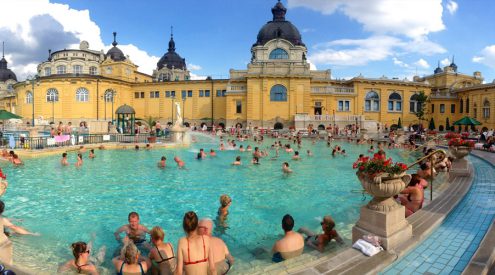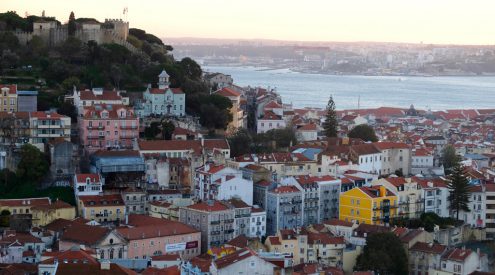“Ban the English pirates” proclaims the protest banner held by motley veterans of the Falklands War in the port of Ushuaia. Pirates?! Strolling around the tiny marina, I read a sign which declares in Spanish and English that “the Malvinas” – the contested colonial outposts of the Falklands, South Georgia and South Sandwich islands – “are since 1883, under the illegal occupations of the United Kingdom of Great Britain”.
I am in Argentina on the thirtieth anniversary of the Falklands War – and Prince William’s sabre-rattling visit is stirring up the old ghosts of the South Atlantic. Flashing my British passport at customs, I wonder if I’ll be asked to declare if I am a pirate too? (On an assignment in Burma, I was once asked to declare I was “a minion of western imperialism” (journalist)). I am in deep pirate waters – about to head out on the Drake Passage, named after the famous British privateer who rounded Cape Horn.
Walking along the windblown pier at the end of the world, we spot L’Austral, our smart expedition ship flying the French tricolour – not the skull and crossbones. With her sleek lines and wooden decks, she stands out among all the rusty old tubs. Launched in early 2011, L’Austral will be our elegant home afloat for the next ten days on an expedition cruise to the Antarctic, one thousand kilometres to the south.
The only patch I wear is for seasickness. Be prepared is my boy scout’s motto. No hero, I’m the first landlubber to visit the ships French surgeon and invest in two patches. Welcoming us aboard, the cruise director (and stand-up comic) crosses himself and warns us to get ready for the “the dreaded Drake”. With 45 km winds and 5 metre swells, the two-day crossing across the convergence of the Atlantic, Southern and Pacific Oceans, might be “a little rough”. I feel invincible with my pirate’s patch.
The sun sets over the end of the world as we set sail down the glassy smooth Beagle Channel, through a spectacular archipelago of islands, snowy peaks and outcrops. I meet fellow journalists from around the world on the observation deck filming our passage past lonely ranches, lighthouses and islands inhabited only by seals, sea-birds and penguins. With Argentina on the port side and Chile to starboard, we settle into our plush suites – and find space to stash all our polar gear, from thermals to boots.
We are all a long way from home – L’Austral, one of the luxury liners in a fleet of mega-yachts owned by Compagnie du Ponant, is based in Marseilles. Small and intimate with 132 suites, she is the perfect size for an expedition – under Antarctic protocols some 100 passengers can go ashore at most sensitive ecological sites at a time. I’m glad we’re not sailing on the leviathan mega-liner with two thousand passengers or more which calls at Ushuaia during our visit. Small is still beautiful.
L’Austral and her sister ship Le Boreal specialise in expedition cruises from the Arctic to the Antarctic, from ten days to a fortnight over the short summer season in the polar regions. On these cruises they carry less than 200 passengers to comply with environmental protocols so they can land at remote destinations throughout the Antarctic Peninsula. Over the next two days at sea we are introduced to the crew and experienced team of eight naturalists. Dr Nicolas Dubreuil an adventurer who has led many expeditions by passengers, scientists and documentary-makers to the north pole, Greenland and the Antarctic, will lead what he calls “an expedition not a cruise!”
The voyage takes on the spirit of an expedition overnight. The liner’s plush corridors soon fill with polar gear drip-drying on mats outside every cabin – from the giant red expedition parkas of L’Austral to insulated wellies, waterproofs, gloves and mufflers. Ushuaia is the closest point to the Antarctic – and many passengers have come from as far afield as Australia, New Zealand and Texas to join the cruise of a lifetime.
The style of the L’Austral and Boreal expedition cruises offered by Compagnie du Ponant is rather different to the usual luxury liners. The global team of naturalists – marine biologists, historians, ecologists and wildlife experts – will lead the daily landings by zodiac boat, offer daily lectures and briefings on board, on shore and as hosts at dinner. It is a very interactive, learning experience compared to most cruises. A lookout on the bridge calls passengers on deck at any time of day to spot orca whales, icebergs or landmarks. Apparently only 30 000 people are lucky enough to visit the Antarctic every season – including all the scientists at dozens of bases.
The first two days in the Drake Passage are filled with activity – and wild seas. We slowly find our sea legs and bless the modern stabilisers of a streamlined ship specifically designed for these conditions. Meeting other passengers over all the good French food and wine served in the smart main restaurant resembles dining in an underwater aquarium at times as five-metre waves crash against the windows.
Getting into the infectious spirit of the voyage, we prepare for Antarctic landings with lifeboat drill, parka fittings, mandatory briefings on zodiac safety procedures – how to embark and disembark in rough, icy waters without falling in – decontamination procedures (how to scrub boots and waterproofs after every shore excursion to prevent spreading disease between nurseries), IAATA protocols on encounters with wildlife – and a session where we vacuum every Velcro strip on our gloves, waterproofs, parkas and hats to prevent spreading alien seeds to the Antarctic. Phew!
The days are long and the nights short this far south. At this time of year, the sun only sets at 11pm with around four hours of darkness before sunrise at around 3am. On the morning of the second day in the Drake near Cape Petrel there is a competition to spot the first iceberg of similar size to the ship – and we all go out on deck to watch it pass by. Captain Genevaz hands out a bottle of champagne to the sharp-eyed passenger.
All that activity works up quite an appetite. Being a French ship, we tuck into loads of good food and wine aboard L’Austral – either in the informal buffet or in the fine dining room. The naturalists host an open table every night. We watch wildlife films like the March of the Penguins and some passengers (not me) watch the nightly cruise entertainment (a team of Russian pianists and showgirl cabaret in the Antarctic!). Instead I read up on the early expeditions of Antarctic explorers in the privacy of our suite. Along with the eighteen journalists aboard I also file copy and pictures. Fortunately L’Austral is WiFi with state-of-the-art satellite and all mod-cons in every suite, from flat screen television and Ipods to mini-bars and 24 hour room service. Captain Cook never had it this good – though he might have liked the dancing girls!
For expedition itineraries and fares of L’Austral and Compagnie du Ponant around the world, contact their agents in Johannesburg, South Africa: Development Promotions – tel 011 442 0822 or see www.devprom.co.za.
ENDS: 20 MAR 2012
For a quick and easy way to book a memorable cruise anywhere in the world, visit Getaway Cruises

















